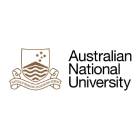Comparing Populations
- Posted by The Australian National University
- Home
- Courses
- The Australian National University
- Comparing Populations
Comparing Populations
Please note that dates are subject to change as is the mode of delivery, which may shift to online/hybrid depending on the specific health directions in the ACT. Populations can be compared in many ways, for example, changing world and national populations across time, or differences between social groups or…
Categories
COURSE DESCRIPTION
Please note that dates are subject to change as is the mode of delivery, which may shift to online/hybrid depending on the specific health directions in the ACT.
Populations can be compared in many ways, for example, changing world and national populations across time, or differences between social groups or across geographies within a population. ‘Comparing populations’ introduces techniques that allow comparison of demographic, health, and social indicators in populations with different age/sex patterns. This short-form micro-credential is aimed at population analysts, policymakers and specialists for the health and social care professions. Participants will have hands-on experience accessing and analysing population data.
Topics
Estimating exposure-time
Calculating age-specific measures
Direct and indirect standardization techniques
Basic decomposition methods
Learning outcomes
Upon successful completion, participants will have the knowledge and skills to:
Develop a comparative data analysis plan and have the ability to gather the appropriate data
Understand demographic measurement of time and the estimation of age-specific measures
Apply techniques that allow comparison of demographic indicators of population with different age/sex patterns
Indicative assessment
Take home report-assignment (LO: 1-3): To be delivered a week after the micro-credential. Participants will select their topic from a list of possible themes on comparing populations, provided the day of the course. The report will consist of no more than 1000 words including: title, introduction, data, results, and discussion. It is expected that participants include some of the calculations studied in the course.
Assumed knowledge
This micro-credential is taught at the graduate level and assumes the generic skills of a Bachelors or equivalent.
Micro-credential stack information
This micro-credential is undertaken as a stand-alone course.
REQUIREMENTS
This micro-credential is taught at the graduate level and assumes the generic skills of a Bachelors or equivalent.
EDUCATIONAL INSTITUTION
The Australian National University (ANU) is a public research university and member of the Group of Eight, located in Canberra, the capital of Australia. Its main campus in Acton encompasses seven teaching and research colleges, in addition to several national academies and institutes.
The Australian National University (ANU) is one of Australia's premier universities and ranked amongst the best in the world. It was created by Federal Parliament in 1946 to drive the nation forward and advance Australia's international standing through research and education of the highest quality. ANU is distinctive because of its national mission, international focus and impressive record in research and education for undergraduate and postgraduate students. Our leading researchers drive our educational programs and shape the ANU learning experience. Students at ANU enjoy excellent staff-student ratios and great employment prospects. They benefit from award-winning and challenging teaching, first-rate facilities and the collegial atmosphere of a residential campus.

